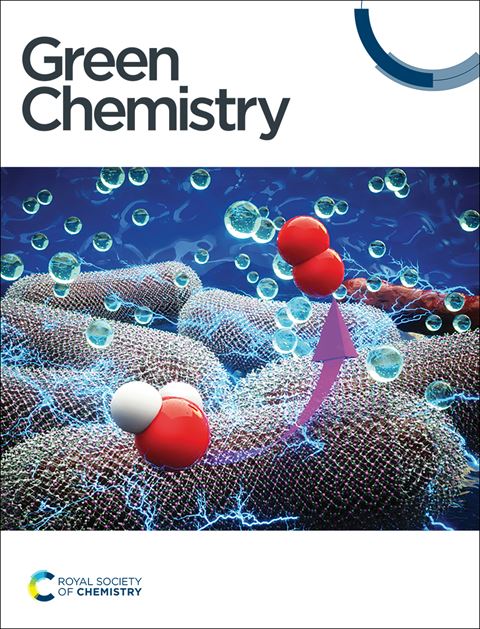论碳酸丙烯酯和碳酸二甲酯作为绿色溶剂在有机电合成中的应用†。
IF 9.3
1区 化学
Q1 CHEMISTRY, MULTIDISCIPLINARY
引用次数: 0
摘要
有机电合成通常在极性非质子溶剂中进行,如DMF、乙腈或二氯甲烷,这些溶剂具有优异的电化学性能,但在可持续性方面存在很大问题。碳酸丙烯酯-碳酸二甲酯(PC-DMC)体系是一种很有前途的替代品,具有更好的环境、健康和安全参数,并且已经在电化学储能系统中得到了许多应用。在此,我们对PC-DMC体系作为有机电合成的反应介质进行了系统的研究,从电解质性质的表征到制备规模上的代表性测试反应。二芳基碘鎓盐的阳极合成、酮的阴极还原和tempo介导的醇氧化都是用例,表明产率与在传统溶剂中获得的产率相当。一个有趣的特点是,可以通过改变PC-DMC的比例来调整反应介质的物理化学性质,这被证明会影响tempo介导的醇氧化的催化速率和二芳基碘的合成收率。本文章由计算机程序翻译,如有差异,请以英文原文为准。
On the use of propylene carbonate and dimethyl carbonate as green solvents in organic electrosynthesis†
Electroorganic syntheses are often carried out in polar aprotic solvents such as DMF, acetonitrile, or dichloromethane, which exhibit excellent electrochemical properties, but are highly problematic in terms of sustainability. The propylene carbonate–dimethyl carbonate (PC–DMC) system is a promising alternative with enhanced environmental, health, and safety parameters, and has already found numerous applications in electrochemical energy storage systems. Herein, we present a systematic study on the PC–DMC system as reaction medium for organic electrosyntheses, spanning from the characterization of electrolyte properties to representative test reactions on a preparative scale. Anodic synthesis of diaryliodonium salts, cathodic reduction of ketones, and TEMPO-mediated alcohol oxidations serve as use cases, showing that yields are comparable to the ones obtained in conventional solvents. An interesting feature is the possibility for tuning the physicochemical properties of the reaction medium by varying the PC–DMC ratio, which was shown to impact the catalytic rate of TEMPO-mediated alcohol oxidations and the yield of diaryl iodonium synthesis.
求助全文
通过发布文献求助,成功后即可免费获取论文全文。
去求助
来源期刊

Green Chemistry
化学-化学综合
CiteScore
16.10
自引率
7.10%
发文量
677
审稿时长
1.4 months
期刊介绍:
Green Chemistry is a journal that provides a unique forum for the publication of innovative research on the development of alternative green and sustainable technologies. The scope of Green Chemistry is based on the definition proposed by Anastas and Warner (Green Chemistry: Theory and Practice, P T Anastas and J C Warner, Oxford University Press, Oxford, 1998), which defines green chemistry as the utilisation of a set of principles that reduces or eliminates the use or generation of hazardous substances in the design, manufacture and application of chemical products. Green Chemistry aims to reduce the environmental impact of the chemical enterprise by developing a technology base that is inherently non-toxic to living things and the environment. The journal welcomes submissions on all aspects of research relating to this endeavor and publishes original and significant cutting-edge research that is likely to be of wide general appeal. For a work to be published, it must present a significant advance in green chemistry, including a comparison with existing methods and a demonstration of advantages over those methods.
 求助内容:
求助内容: 应助结果提醒方式:
应助结果提醒方式:


